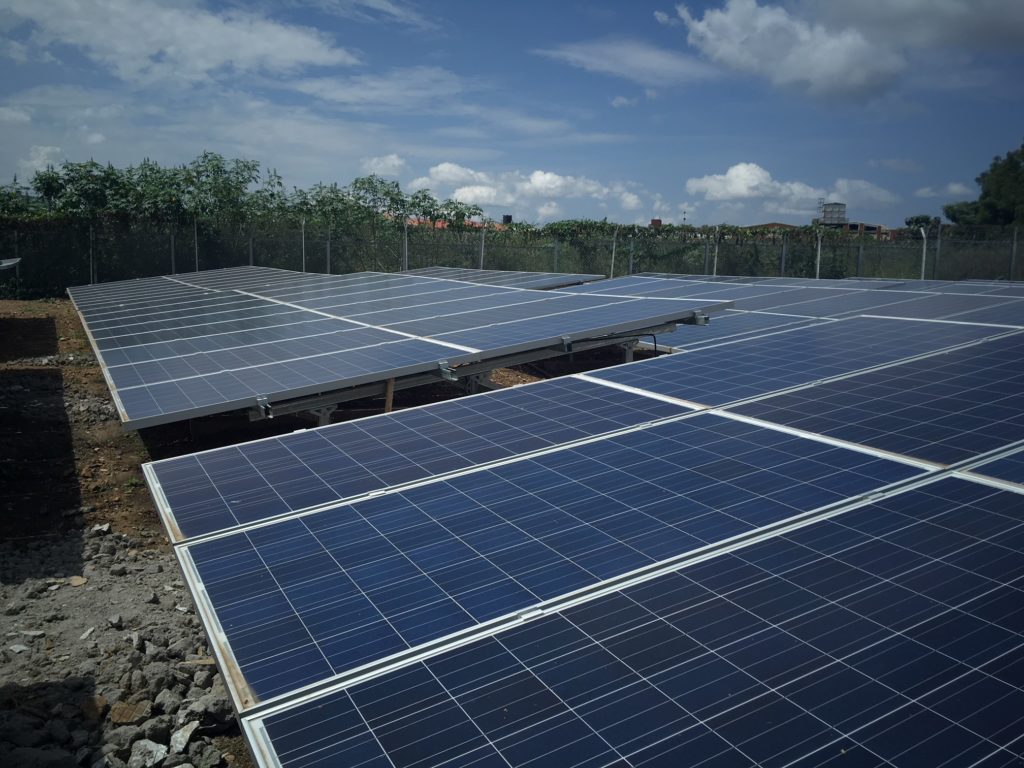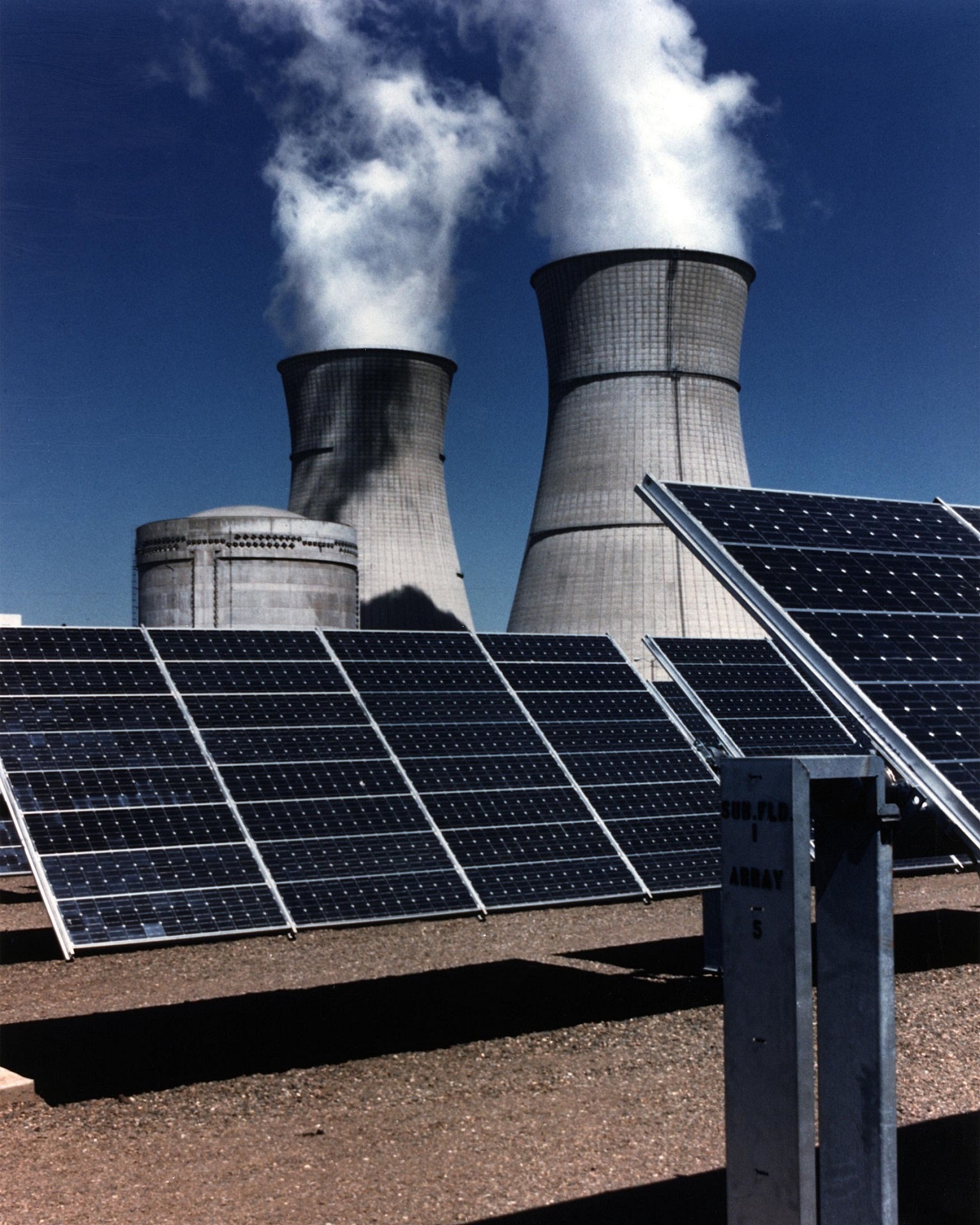If you read the article “Energy Systems”, you know that anything that produces, stores, or transfers energy is an Energy System. I discussed many different types of energy systems, each with their own energy source. Now, in reality, according to Newton’s Conservation of Energy, all energy systems are simply used to transfer energy. Energy is neither created nor destroyed, it just changes forms, but that is a story for another day. When we talk about energy systems for the loads you have in your home, and use in your life, we will talk about energy sources and the production, storage, and transfer of the energy you use. In describing sources of energy, we separate them into two groups; Renewable Energy Sources, that are readily available and reproduced on a daily basis, and non-Renewable Energy Sources, or Conventional Sources, that take centuries, millennia, or eons to reproduce. On a daily basis, I design and engineer systems to provide energy to people’s homes, businesses, water supplies, cars and schools, all supplied by renewable energy sources. The majority of my business is Renewable Energy Systems. One common question I get, from people just getting into energy systems is what are Renewable Energy Systems; what are the different types, sources, and scales? I will touch on the basics here, and get into more depth in future articles.
As I mentioned above, renewable energy sources are readily available, and reproduce on a daily basis. These are energy sources like the wind, which changes with variances in atmospheric pressure. When that variance changes position or direction, the wind changes. We don’t need to grow the wind, or bury it under tons of rock for millions of years to get more wind. When we use the wind for energy, it will be back again tomorrow, if the pressure variance is favorable. The same is true for hydro-power and tidal power. These energy sources are dependent on the position and direction of a pressure difference in the medium they use (wind or water). As such, though, they do depend on position and direction. If I have taken the energy out of the wind with a turbine, a second turbine placed behind the first will not have any available wind energy to use. Likewise, the water at the bottom of a dam will not produce much energy by comparison to the output of the dam, but I will get into more detail on these subjects in future articles.
Probably the most well known renewable energy source is solar power, thermal or photovoltaic. Every day this glowing ball of gas travels across the sky and provides nearly all of the available energy on the planet. Ok, it doesn’t travel across the sky, our planet rotates and revolves around it, but, from our perspective, it comes out most days, and provides energy. When we use the energy one day, it is not gone the next. Every day, this resource is available to us again. Light, or radiation, from the Sun heats the Earth, as well as liquids in solar thermal panels, and interacts with electrons in solar cells, providing the ultimate renewable energy resource. The Sun is actually a giant nuclear fusion reactor. We only use the radiation that reaches the Earth, but the actual source of the energy produced by the Sun is nuclear reactions. Which brings me to another interesting renewable energy resource that I have had limited interaction with. Micro-nuclear power plants are small nuclear reactors, available for small scale use. While these do burn a non renewable resource, the energy available from a small amount of material is on such a scale, that it is virtually available anew each day. There are, of course, more renewable energy resources, such as bio-diesel and hydrogen fuel cells, that I haven’t touched on here, but the main point hear is that each of these energy sources are made available for use on a daily basis. Processes that take millennia are not required to reproduce these sources.
One aspect that comes into play with all of our renewable energy sources is the availability of the resource. For each of these sources, there is some time when the resource is not available. A wind turbine only spins when the wind is strong enough. Hydro power is only available if there has been enough precipitation to support it. They are currently reducing the output of the Hoover Dam as a result of the low water levels in Lake Mead due to historic droughts. Solar power is limited when it is cloudy and not available at night. Finally, while we can turn a nuclear plant on and off, the rods, the material used to produce the energy, take time to heat up and cool down. The power from these resources is not available on demand, and if you produce more power than you are using, you need to have somewhere to send it. This is the vital role played by energy storage systems and the utility grid. They provide sources for power on demand, and places to send energy that is not being used.
There is a broad spectrum of types of renewable energy systems that range from Grid Tied to completely Off Grid. A grid tied system is an energy generating plant that provides power to the loads at its location, and pushes whatever is left over on to the electrical grid (the electrical utility). When the renewable energy system is not producing power, at night for a solar system for example, the electrical loads at the site are powered by the electrical grid. One feature common to this type of system, regardless of the source, is that, when the electrical grid is down, during a brownout or blackout, the system is down as well. This is a safety feature built in to protect utility line workers. If a renewable energy system is feeding power into lines that the worker believes aren’t energized, it could result in serious injury, or death. At the other end of the spectrum, we have systems that are completely off the grid. These systems produce enough energy when the resource is available to, not only power the currently existing loads, but also to charge a battery bank to power the loads when the resource is not available. There is no connection to the utility, so if there isn’t enough energy, either being produced by the system, or stored in the batteries, there will need to be an alternative source, like a gas generator, on site to power the loads. All other Renewable Energy Systems are some combination of battery based, backup energy, and grid interactivity. We can add a high voltage, low capacity battery to a grid tied system, to shave high demand loads (Air Conditioners, space heaters, etc.) during on-peak billing times, when the utility charges the highest rates. Alternatively, we could have a Grid-Zero system, that takes power from the utility to help charge the batteries when the renewable resource is less available, but never pushes power produced by the Renewable Energy System back to the grid. Someone who starts off with a grid tied system can add battery backup, or go completely off the grid by coupling a battery based inverter to their grid tied inverter in an AC Coupled system. For a large system that mainly has loads when the renewable resource is available, it may be more efficient to start off with an AC Coupled system. Yet others may just want to have certain loads available when the power is out, or have a water pumping system that they want to cut from their electric bill. They can have a battery based Renewable Energy System just for that pump, or the electrical sub-panel dedicated to their critical loads. For any application of an energy system, there is a suitable type of Renewable Energy System. If one doesn’t exist, we can engineer one for it.
When we talk about a commercial or a residential Renewable Energy System, we are referring to the scale of the system. Systems can range in scale from the solar powered pocket calculator you got in the 1980’s, to Megawatt scale utility systems. The scale of the system is directly related to the energy requirements of the loads we are looking to power. A small calculator doesn’t use much energy, so a small strip of cells is enough. If you have an electric gate, you may want a small battery and a 30W to 50W panel. Likewise, you may only need a small panel and battery system to power a delivery pump for your home or RV. When we get to residential scale systems, we are usually looking at 60 cell, 250W to 300W panels. A typical system can use 12 to 45 of these panels, depending on the available resource, and energy consumption habits of the residents, and may also employ a couple of small turbines that range from 200W to 1500W. Wind turbines are typically not used on their own in a residential scale system, due to the variability in the resource availability. Overall, residential systems usually scale in at the low end of the tens of kilowatts range. That is where commercial scale systems start. Even for Cathodic Protection systems, that protect equipment from rusting, a system in the low end of the tens of kilowatts will be required. It is not unusual to see commercial systems run into the megawatt scale. Where a residential system will output 120V/240VAC split phase in North America (230VAC Single Phase in much of the World), commercial systems will utilize 480VAC three phase output. The higher voltage allow the transfer of smaller currents in such high power systems. Megawatt systems are the starting point for utility scale systems. When a utility installs a system, it will take up large swaths of land, and provide power to whole communities when it is producing. Utility scale systems are backed up by conventional energy systems that can be fired up on demand when the load is too large. Due to the sheer scale of these systems, many different resources are available. Giant turbines can be configured in wind farms where, though the blades don’t appear to be moving much, the power available in their large swept area is significant. Fields of curved mirrors can be directed at a focal point in a Power Tower to melt salt and store solar energy. The heat from which can later be used to turn a turbine, on demand. Depending on the scale of the system, different resources can be used, or required, to provide for the loads.
>With the world’s energy consumption continually growing, we will need to transition to renewable energy sources. Many forward thinking individuals, companies, and utilities have already started this process. As we move into this new landscape, more renewable energy resources are discovered and explored, as well as new applications at every scale. It is an exciting time to be engineering Renewable Energy Systems.
If you have any questions or comments, leave a reply in the comments section below.


